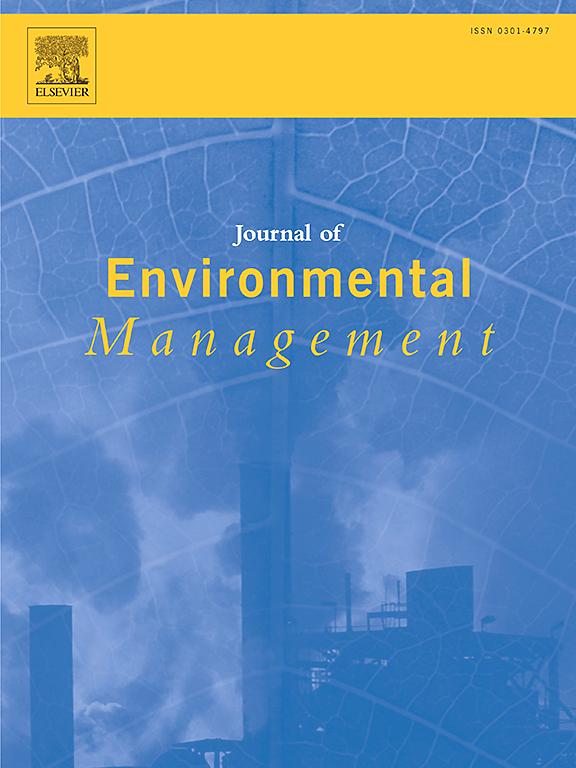IF 8
2区 环境科学与生态学
Q1 ENVIRONMENTAL SCIENCES
引用次数: 0
摘要
土壤是满足世界人口需求的最重要资源。与土壤相关的生态系统服务(SRES)的可持续性是可持续粮食安全的主要指标。由于各项服务之间存在复杂的关系,因此必须了解环境和管理驱动因素,以确保 SRES 的稳健性。在各项服务之间的相互作用中,驱动因素的重要性各不相同。我们对伊朗半干旱生态系统中的四种 SRES(即土壤保持、气候调节、水调节和土壤形成)进行了量化。研究结果表明,不同土地覆被提供 SRES 的潜力各不相同(p < 0.05)。除了土壤形成和水分调节显示出微弱的正相关性(R2 = 0.0342,p > 0.05)外,SRES 显示出很强的协同关系(p < 0.01)。贝叶斯网络(BNs)具有模拟复杂系统和不确定性的能力,是确定影响 SRES 的最重要环境和管理驱动因素的完美工具。贝叶斯网络显示,海拔高度是影响 SRES 产量的最重要驱动因素,占 15%。为实现半干旱生态系统的可持续管理,确定了 SRES 成对关系的主要驱动因素。研究发现,净生产力阈值(1.2 吨/公顷-1)对维持土壤形成和气候调节至关重要。丰富度阈值(10-15 个植物物种)对维持土壤保持和水分调节至关重要。我们的研究结果表明,在 SRES 关系密切的情况下,理论上支持生物多样性管理和灌木保护。因此,提高物种丰富度,尤其是提高净生产力较高的物种,应成为未来干旱地区环境管理的首要目标,以实现 SRES 效益的最大化。本文章由计算机程序翻译,如有差异,请以英文原文为准。
Management of soil-related ecosystem services in semi-arid regions of Iran using key environmental drivers
Soil is the most important resource for meeting the needs of the world's population. Sustainability of soil-related ecosystem services (SRES) is the primary indicator for sustainable food security. Since there are complex relationships between services, it is essential to understand the environmental and management drivers for robustness of SRES. The importance of drivers varies in the interactions between services. Four SRES i.e. soil retention, climate regulation, water regulation, and soil formation have been quantified in the semi-arid ecosystems of Iran. The findings demonstrated that the potential of land covers to provide SRES varied (p < 0.05). SRES exhibited strong synergy relations (p < 0.01), except soil formation and water regulation, which displayed a weak positive correlation (R2 = 0.0342, p > 0.05). The Bayesian networks (BNs) is a perfect tool to identify the most important environmental and management drivers influencing SRES due to its ability to model complex systems and uncertainties. BNs showed that elevation as the most important drivers influenced 15 % of the production of SRES. For sustainable management of semiarid ecosystems, the primary drivers of the pairwise relationships of SRES were identified. The NPP threshold (1.2 t ha−1) was found to be essential for maintaining soil formation and climate regulation. Richness threshold (10–15 plant species) was crucial for maintaining soil retention and water regulation. Our finding indicated a theoretical support for biodiversity management and shrub conservation in respect to strong SRES relations. Therefore, enhancing the species richness especially species with higher NPP should be the primary goal of the environmental management to maximize SRES benefit in arid lands in the future.
求助全文
通过发布文献求助,成功后即可免费获取论文全文。
去求助
来源期刊

Journal of Environmental Management
环境科学-环境科学
CiteScore
13.70
自引率
5.70%
发文量
2477
审稿时长
84 days
期刊介绍:
The Journal of Environmental Management is a journal for the publication of peer reviewed, original research for all aspects of management and the managed use of the environment, both natural and man-made.Critical review articles are also welcome; submission of these is strongly encouraged.
 求助内容:
求助内容: 应助结果提醒方式:
应助结果提醒方式:


